Tsung-Han Chan
Semiblind Hyperspectral Unmixing in the Presence of Spectral Library Mismatches
Jul 07, 2015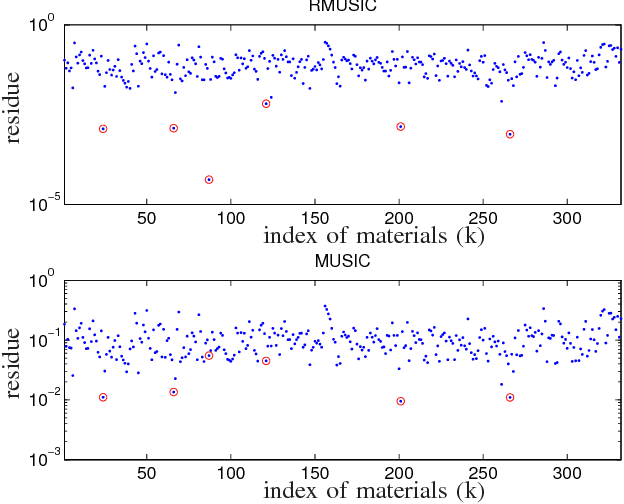
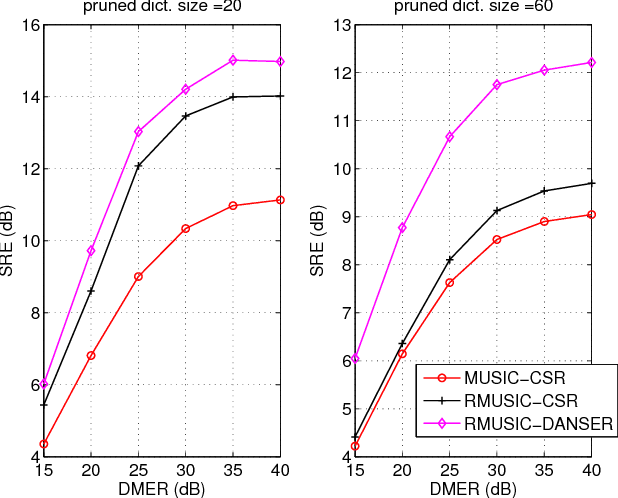
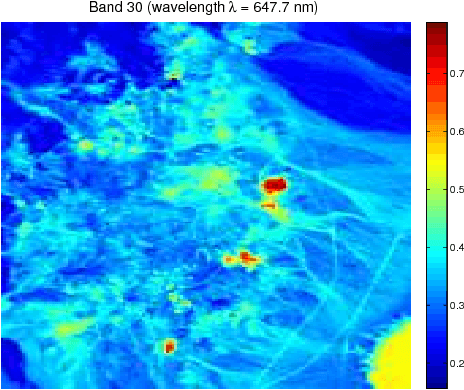
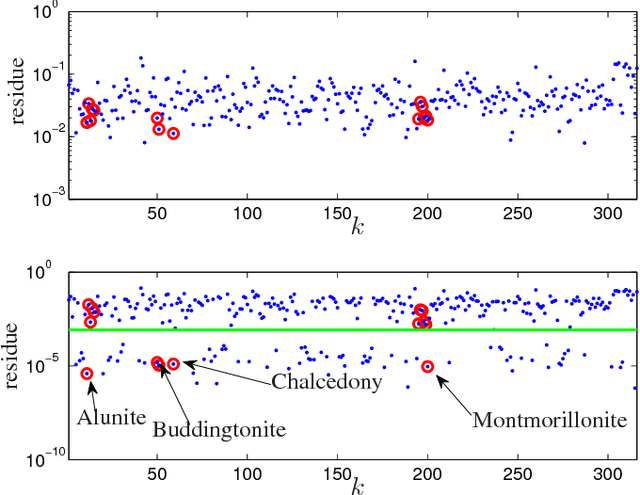
Abstract:The dictionary-aided sparse regression (SR) approach has recently emerged as a promising alternative to hyperspectral unmixing (HU) in remote sensing. By using an available spectral library as a dictionary, the SR approach identifies the underlying materials in a given hyperspectral image by selecting a small subset of spectral samples in the dictionary to represent the whole image. A drawback with the current SR developments is that an actual spectral signature in the scene is often assumed to have zero mismatch with its corresponding dictionary sample, and such an assumption is considered too ideal in practice. In this paper, we tackle the spectral signature mismatch problem by proposing a dictionary-adjusted nonconvex sparsity-encouraging regression (DANSER) framework. The main idea is to incorporate dictionary correcting variables in an SR formulation. A simple and low per-iteration complexity algorithm is tailor-designed for practical realization of DANSER. Using the same dictionary correcting idea, we also propose a robust subspace solution for dictionary pruning. Extensive simulations and real-data experiments show that the proposed method is effective in mitigating the undesirable spectral signature mismatch effects.
ROML: A Robust Feature Correspondence Approach for Matching Objects in A Set of Images
Mar 31, 2015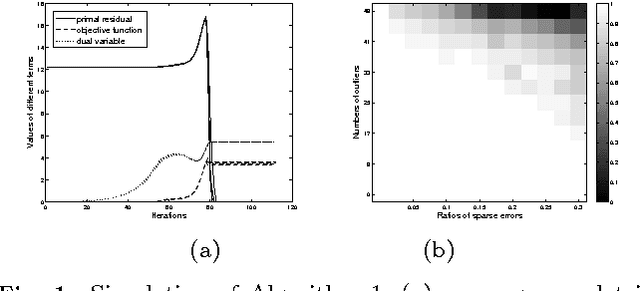



Abstract:Feature-based object matching is a fundamental problem for many applications in computer vision, such as object recognition, 3D reconstruction, tracking, and motion segmentation. In this work, we consider simultaneously matching object instances in a set of images, where both inlier and outlier features are extracted. The task is to identify the inlier features and establish their consistent correspondences across the image set. This is a challenging combinatorial problem, and the problem complexity grows exponentially with the image number. To this end, we propose a novel framework, termed ROML, to address this problem. ROML optimizes simultaneously a partial permutation matrix (PPM) for each image, and feature correspondences are established by the obtained PPMs. Two of our key contributions are summarized as follows. (1) We formulate the problem as rank and sparsity minimization for PPM optimization, and treat simultaneous optimization of multiple PPMs as a regularized consensus problem in the context of distributed optimization. (2) We use the ADMM method to solve the thus formulated ROML problem, in which a subproblem associated with a single PPM optimization appears to be a difficult integer quadratic program (IQP). We prove that under wildly applicable conditions, this IQP is equivalent to a linear sum assignment problem (LSAP), which can be efficiently solved to an exact solution. Extensive experiments on rigid/non-rigid object matching, matching instances of a common object category, and common object localization show the efficacy of our proposed method.
Self-Dictionary Sparse Regression for Hyperspectral Unmixing: Greedy Pursuit and Pure Pixel Search are Related
Mar 03, 2015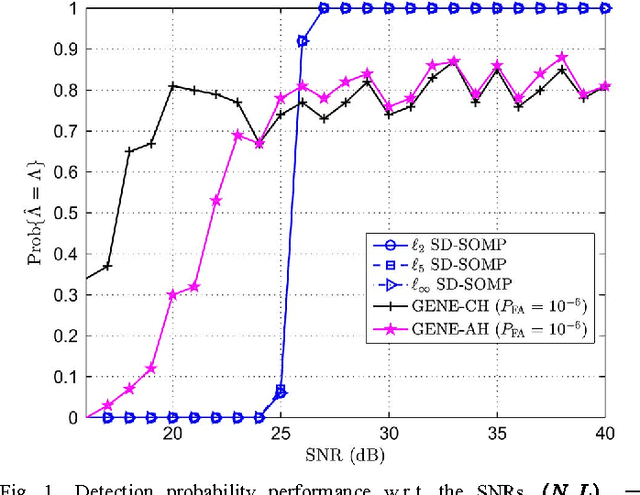
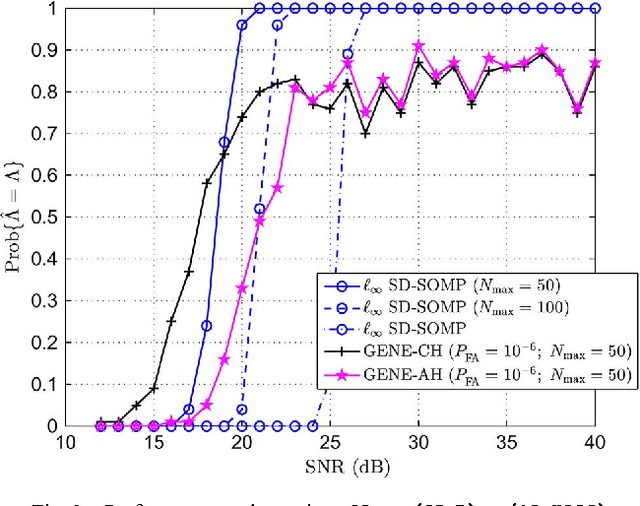
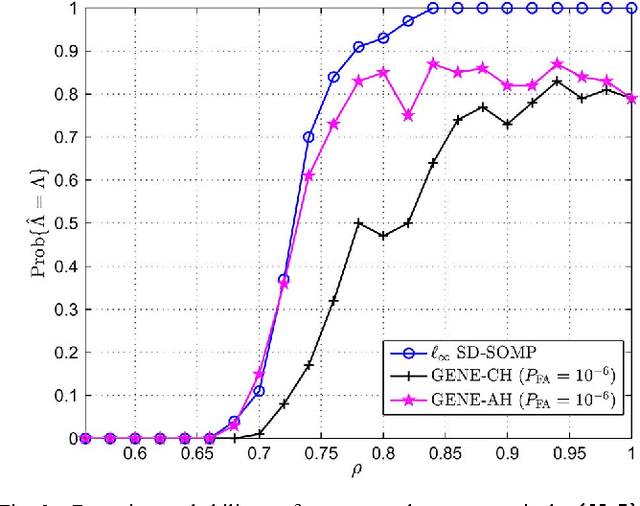
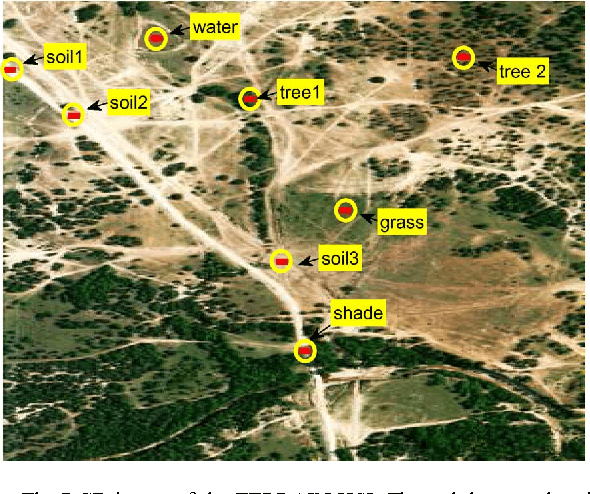
Abstract:This paper considers a recently emerged hyperspectral unmixing formulation based on sparse regression of a self-dictionary multiple measurement vector (SD-MMV) model, wherein the measured hyperspectral pixels are used as the dictionary. Operating under the pure pixel assumption, this SD-MMV formalism is special in that it allows simultaneous identification of the endmember spectral signatures and the number of endmembers. Previous SD-MMV studies mainly focus on convex relaxations. In this study, we explore the alternative of greedy pursuit, which generally provides efficient and simple algorithms. In particular, we design a greedy SD-MMV algorithm using simultaneous orthogonal matching pursuit. Intriguingly, the proposed greedy algorithm is shown to be closely related to some existing pure pixel search algorithms, especially, the successive projection algorithm (SPA). Thus, a link between SD-MMV and pure pixel search is revealed. We then perform exact recovery analyses, and prove that the proposed greedy algorithm is robust to noise---including its identification of the (unknown) number of endmembers---under a sufficiently low noise level. The identification performance of the proposed greedy algorithm is demonstrated through both synthetic and real-data experiments.
Robust Face Recognition by Constrained Part-based Alignment
Jan 20, 2015



Abstract:Developing a reliable and practical face recognition system is a long-standing goal in computer vision research. Existing literature suggests that pixel-wise face alignment is the key to achieve high-accuracy face recognition. By assuming a human face as piece-wise planar surfaces, where each surface corresponds to a facial part, we develop in this paper a Constrained Part-based Alignment (CPA) algorithm for face recognition across pose and/or expression. Our proposed algorithm is based on a trainable CPA model, which learns appearance evidence of individual parts and a tree-structured shape configuration among different parts. Given a probe face, CPA simultaneously aligns all its parts by fitting them to the appearance evidence with consideration of the constraint from the tree-structured shape configuration. This objective is formulated as a norm minimization problem regularized by graph likelihoods. CPA can be easily integrated with many existing classifiers to perform part-based face recognition. Extensive experiments on benchmark face datasets show that CPA outperforms or is on par with existing methods for robust face recognition across pose, expression, and/or illumination changes.
PCANet: A Simple Deep Learning Baseline for Image Classification?
Aug 28, 2014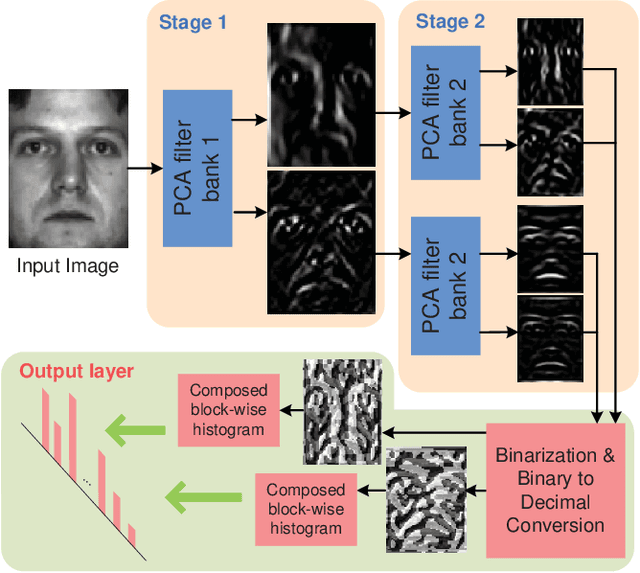


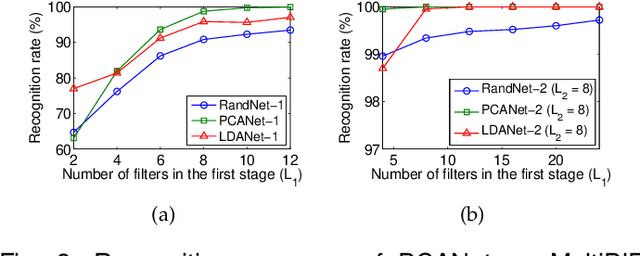
Abstract:In this work, we propose a very simple deep learning network for image classification which comprises only the very basic data processing components: cascaded principal component analysis (PCA), binary hashing, and block-wise histograms. In the proposed architecture, PCA is employed to learn multistage filter banks. It is followed by simple binary hashing and block histograms for indexing and pooling. This architecture is thus named as a PCA network (PCANet) and can be designed and learned extremely easily and efficiently. For comparison and better understanding, we also introduce and study two simple variations to the PCANet, namely the RandNet and LDANet. They share the same topology of PCANet but their cascaded filters are either selected randomly or learned from LDA. We have tested these basic networks extensively on many benchmark visual datasets for different tasks, such as LFW for face verification, MultiPIE, Extended Yale B, AR, FERET datasets for face recognition, as well as MNIST for hand-written digits recognition. Surprisingly, for all tasks, such a seemingly naive PCANet model is on par with the state of the art features, either prefixed, highly hand-crafted or carefully learned (by DNNs). Even more surprisingly, it sets new records for many classification tasks in Extended Yale B, AR, FERET datasets, and MNIST variations. Additional experiments on other public datasets also demonstrate the potential of the PCANet serving as a simple but highly competitive baseline for texture classification and object recognition.
Sparse Illumination Learning and Transfer for Single-Sample Face Recognition with Image Corruption and Misalignment
Feb 08, 2014
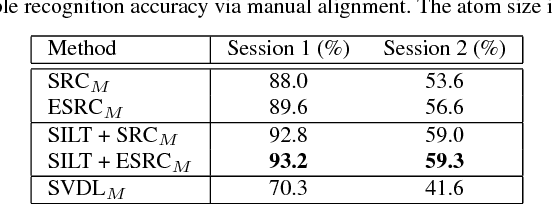


Abstract:Single-sample face recognition is one of the most challenging problems in face recognition. We propose a novel algorithm to address this problem based on a sparse representation based classification (SRC) framework. The new algorithm is robust to image misalignment and pixel corruption, and is able to reduce required gallery images to one sample per class. To compensate for the missing illumination information traditionally provided by multiple gallery images, a sparse illumination learning and transfer (SILT) technique is introduced. The illumination in SILT is learned by fitting illumination examples of auxiliary face images from one or more additional subjects with a sparsely-used illumination dictionary. By enforcing a sparse representation of the query image in the illumination dictionary, the SILT can effectively recover and transfer the illumination and pose information from the alignment stage to the recognition stage. Our extensive experiments have demonstrated that the new algorithms significantly outperform the state of the art in the single-sample regime and with less restrictions. In particular, the single-sample face alignment accuracy is comparable to that of the well-known Deformable SRC algorithm using multiple gallery images per class. Furthermore, the face recognition accuracy exceeds those of the SRC and Extended SRC algorithms using hand labeled alignment initialization.
 Add to Chrome
Add to Chrome Add to Firefox
Add to Firefox Add to Edge
Add to Edge